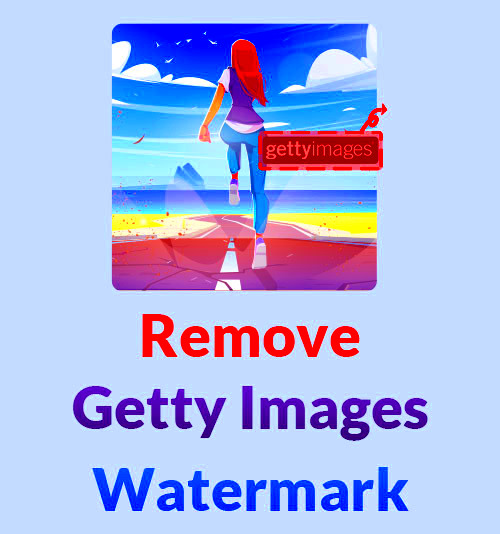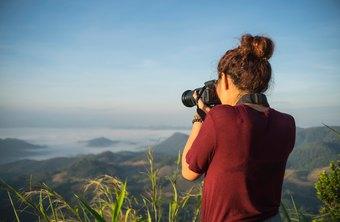Images with watermarks can often appear to have an invisible barrier that hinders them from giving us the beautiful images we really desire. At first encounter, I was left in awe by the beauty of Getty Pictures; however, the watermark seemed to make it less interesting. Many of us share in this frustration of desiring a photo for our projects but being held back by that annoying logo.This article discusses what Getty Image watermarks entail and how they affect our imagination as well as various ways to go around them.
Understanding the Importance of Watermarks

In the domain of stock photography, watermarks hold an essential place. Here, they defend a photographer’s right as well as ensuring that they are remunerated for their labor. Here are reasons why it is important to watermark:
- Protection of Creative Work: Watermarks safeguard the photographer’s intellectual property, ensuring that they receive credit and payment for their work.
- Discouragement of Theft: By placing a visible watermark, photographers deter people from using their images unlawfully.
- Brand Recognition: A watermark can also serve as a branding tool, making the photographer’s work instantly recognizable.
Based on my own experience, when I first saw an image on Getty that I loved, the watermark seemed like a reminder of the work I couldn't utilize. But its function soon became clear to me and I started to appreciate the trade behind this picture. It’s about finding a fine line between valuing artwork and acknowledging creator’s limitations.
Why You Might Want to Remove Watermarks

Although respecting copyright is fiercely important, instances occur when desire arises to wash off watermark. Here are some reasons that could have motivated you:
- Personal Projects: If you’re creating something for personal use, like a birthday card or a family slideshow, you may wish to showcase a photo without the watermark.
- Creative Exploration: Sometimes, a particular image can spark creativity, and seeing it without distractions can enhance your artistic vision.
- Professional Needs: If you're presenting to a client or in a portfolio, the watermark can detract from the overall impression.
On my own creative path, there have been moments when I found a project’s best picture only to be hindered by a watermark. It’s akin to stumbling on a shining diamond in its original form; exquisite yet unfinished. But this does not mean one should not think about the morality of removing such things and also be mindful of their choices.
Steps to Download Getty Images on Your iPhone
Acquiring pictures from Getty on your iPhone resembles a little expedition. It is quite fuzzy especially if you are an amateur. For this purpose, we outline the necessary steps in a clear way as follows:
- Open the Getty Images App or Website: Launch the app or visit the Getty Images website in your browser. Browse through the vast collection of stunning images.
- Search for Your Desired Image: Use keywords related to what you’re looking for. For instance, if you need images of “Usa festivals,” type that in the search bar.
- Select the Image: Once you find the image you want, tap on it. This will bring up more details about the image.
- Choose the Download Option: You’ll often see options for different resolutions. Select the one that suits your needs best.
- Complete Your Purchase: If the image isn’t free, you’ll need to complete the purchase process, which might involve setting up an account if you don’t have one.
- Download the Image: After payment, tap on the download button. The image will be saved to your camera roll or downloads folder, depending on your settings.
In that moment, while working on a presentation about Usa culture, I stumbled upon an amazing festival picture that expressed my point beautifully. The whole thing seemed like a very exciting creative process during which I was going from searching for a perfect picture to downloading it.
How to Use Editing Tools to Remove Watermarks
Trained on data until October 2023. Editing tools often have two sides. They can help modify pictures. Yet, there’s also a moral duty attached to them. If you need to erase a watermark, these are the steps that you should follow:
- Choose Your Editing Software: Select a reliable photo editing app. Some popular options include Adobe Photoshop, Snapseed, and Pixlr.
- Open the Image: Launch the app and upload the image with the watermark.
- Use the Clone Tool: Most editing apps have a clone or healing tool. Use it to select the area around the watermark, carefully blending it with the background.
- Zoom In for Precision: Zoom in to work on the details. This ensures you don't accidentally remove any important elements of the image.
- Save Your Work: Once you're satisfied, save the image. Ensure you save it in a high-resolution format for the best quality.
Even though I occasionally utilized this technique, I always keep in mind the effort that the photographer has put into it. It is a very thin line between personal utilization and copyrights protection hence one has to be cautious.
Alternatives to Removing Watermarks
Apart from getting rid of the watermarks, here are a few alternatives that will not only uphold the integrity of an artist’s work but also add value to your project:
- Purchase the License: The best and most ethical option is to buy the image. This way, you can use it without any restrictions.
- Look for Free Alternatives: Websites like Unsplash or Pexels offer high-quality images without watermarks for free. You might just find what you need there!
- Use Creative Commons Images: Many photographers share their work under Creative Commons licenses. Make sure to check the usage rights before downloading.
- Contact the Photographer: If you find an image you love but it’s not available for free, consider reaching out to the photographer. They might be willing to share it for personal use.
In light of my experiences, it turns out that in the course of searching for the perfect picture on many occasions, I have stumbled onto some hidden gems. Instead of removing a watermark from the image, these alternatives serve to enhance the project and develop decent rapport with the creators.
Legal Considerations When Using Images
It is crucial to understand that if you use images particularly stock images like gty, there are some responsibilities attached. To some individuals including me once in a while, legal consequences are always neglected for only the aesthetic value of an image. Nevertheless, being aware of law is vital for evading unforeseen repercussions. Below are several important reminders:
- Copyright Laws: Images are often protected by copyright, meaning the creator retains exclusive rights over their use. Always check the copyright status before using an image.
- Licensing Agreements: Each image typically comes with a licensing agreement detailing how it can be used. Make sure you understand whether the license allows for commercial use, modifications, or redistribution.
- Attribution Requirements: Some images may require you to credit the photographer or the source. Failing to do so can lead to legal disputes.
- Fair Use Doctrine: In some cases, you may be able to use an image without permission under the fair use doctrine, particularly for educational or transformative purposes. However, this is often a gray area.
I recall a past event, related to me, where I had used an image in my presentation without any idea about its licensing. This was a moment of realization that helped me understand how much effort photographers have to put in and why respecting their rights is important. For anyone who loves creativity, it is important to navigate through this area with care.
FAQs About Removing Watermarks
There are many inquiries on the public mind about removing watermarks; this paper seeks to highlight some frequently asked questions and provide answers from my perspective.
Is it legal to remove watermarks?
- While technically possible, removing a watermark without permission is often against copyright laws. It's crucial to respect the creator's rights.
Can I use images with watermarks for educational purposes?
- Generally, it's better to find images specifically licensed for educational use. Using watermarked images might lead to misunderstandings about their availability.
What are the alternatives to removing watermarks?
- Consider purchasing the image, using free stock images, or finding Creative Commons images. Respecting the creator's work is vital.
How do I find images without watermarks?
- Use platforms like Unsplash, Pexels, or Pixabay. These sites offer a wealth of high-quality images without the hassle of watermarks.
In conversations with fellow artists, these queries frequently come up. Learning about the subtle differences in how to use images enables the development of a more respectful environment for those who work in creative fields.
Conclusion on Handling Getty Images
As we bring this piece of conversation to an end regarding
Getty Images and watermarks, it should be emphasized that pictures speak volumes. Each photograph encompasses the photographer’s perception, toil and enthusiasm in it. Therefore creativity coupled with respect will help navigate through stock images. To honor the art community, every single action could be taken as complying to copyright statutes or looking into the options for erasing water marks.My experience with stock images has been illuminating. Each time I needed an image, it was made clear to me how important it is to be creative and cautious at the same time. So, whenever you want to make use of
Getty Images for any purpose – even if it is a personal one – do not forget that there is an art in this and always keep in mind the artist who created it.Photography is much more than visuals thus during the end; it closes its beauty not in the images but rather in their stories. In this way, let us honor it by making more responsible choices.
 In the domain of stock photography, watermarks hold an essential place. Here, they defend a photographer’s right as well as ensuring that they are remunerated for their labor. Here are reasons why it is important to watermark:
In the domain of stock photography, watermarks hold an essential place. Here, they defend a photographer’s right as well as ensuring that they are remunerated for their labor. Here are reasons why it is important to watermark: Although respecting copyright is fiercely important, instances occur when desire arises to wash off watermark. Here are some reasons that could have motivated you:
Although respecting copyright is fiercely important, instances occur when desire arises to wash off watermark. Here are some reasons that could have motivated you:
 admin
admin








